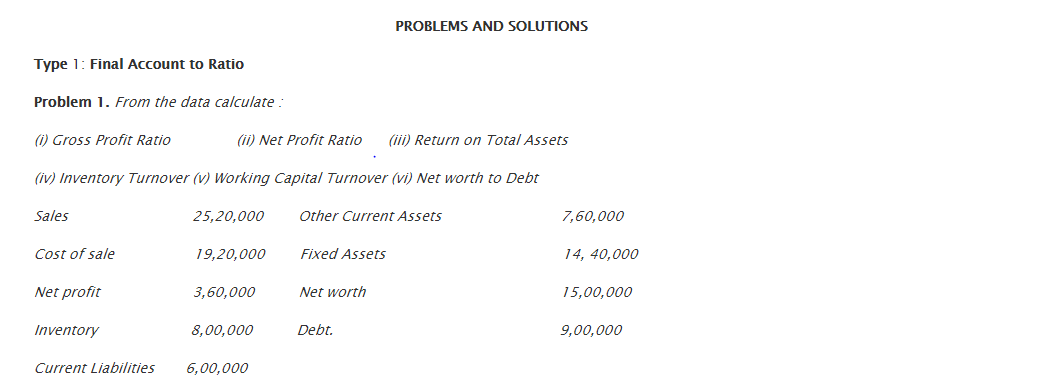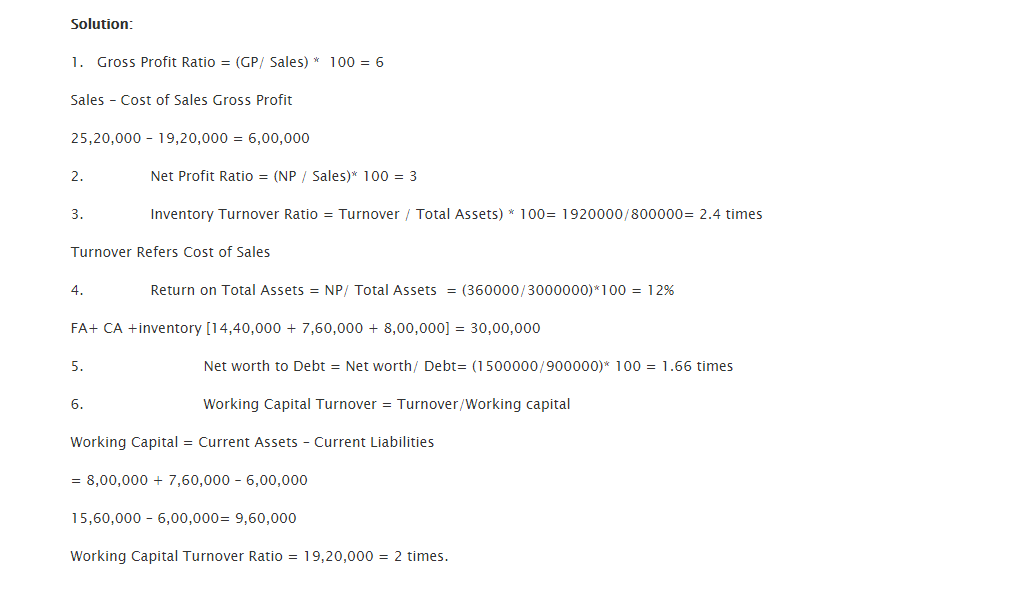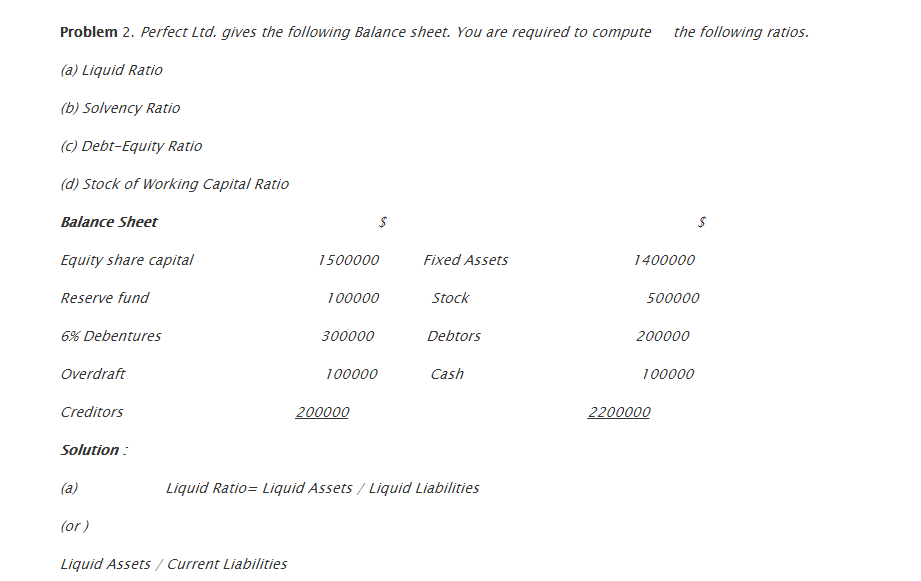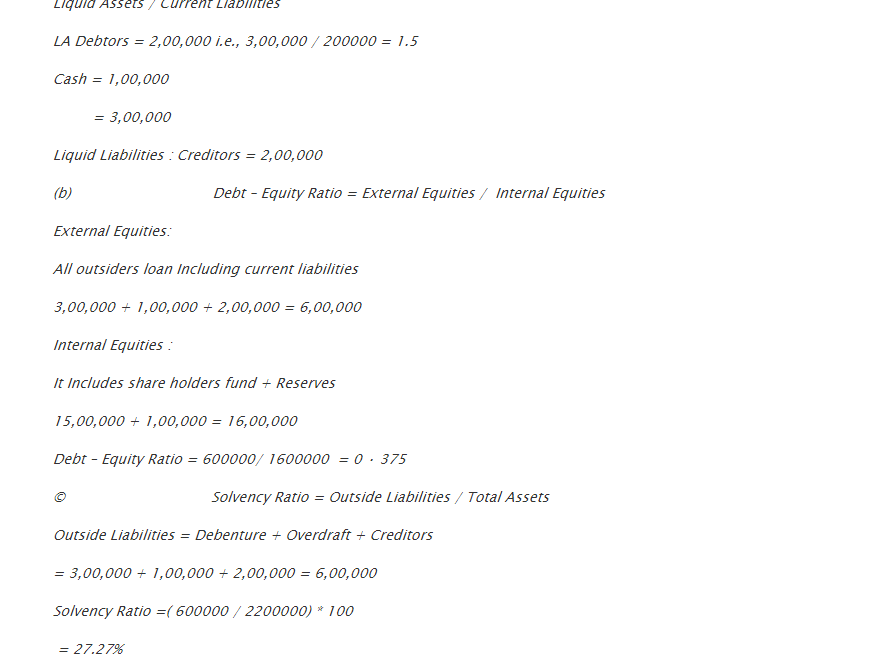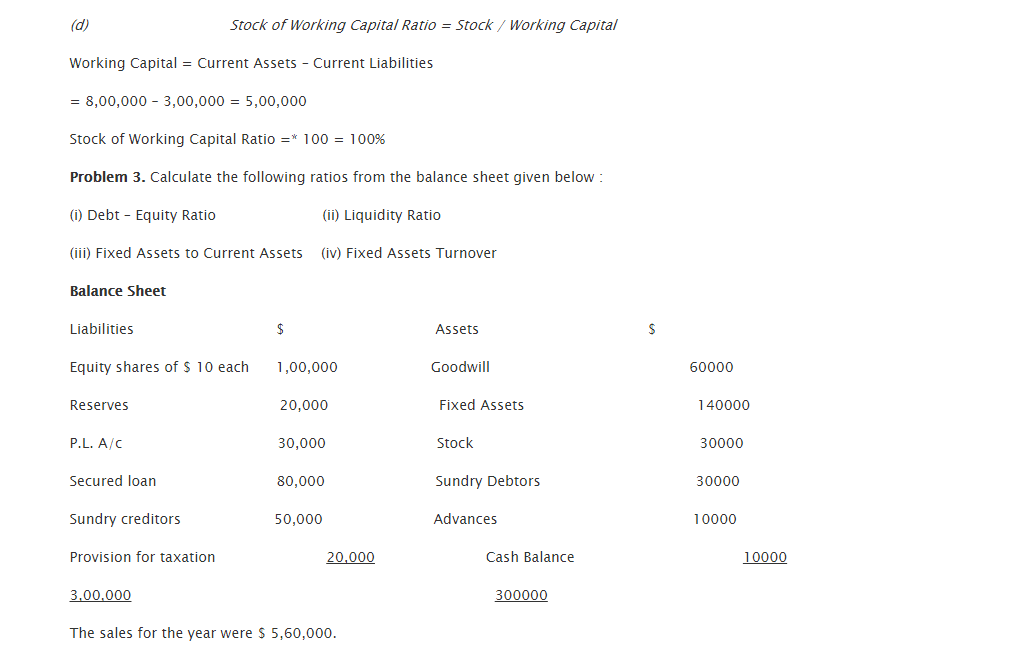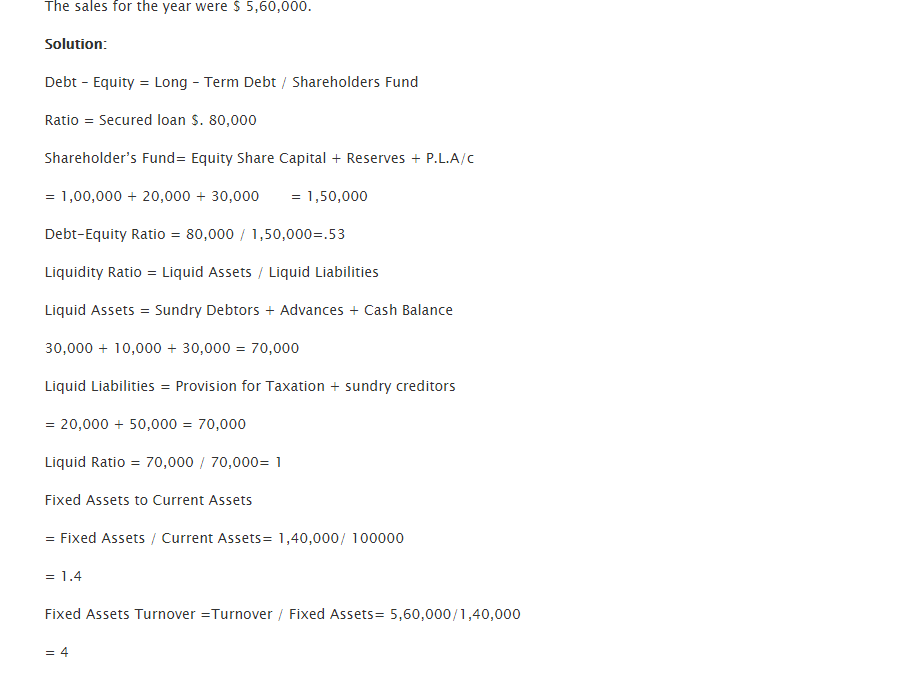Ratio analysis is a tool that is used for getting a quick indication of a company’s financial condition in respect to market. As a form of Financial Statement Analysis, this is calculated in a specific manner.
How to calculate ratio analysis?
Certain details are to be placed while calculating ration analysis. These include:
Liabilities:
- Sundry creditors
- Dividends and payable bills
- Share capital
- Debentures
- Short term advances
- Accrued expenses
Assets:
- Fixed capital (Machinery, Land, Building)
- Receivable bills
- Sundry debtors
- Cash at bank
- Inventories
- Patents
- Prepaid expenses
Current Ratio = Current Assets/Current Liabilities
Liquid Ratio = (Current Assets – Prepaid and Stock Expenditure)/Current Liabilities
Gross Profit Ratio = (Gross Profit/Net Sales) x 100
Gross Profit = Sales – Cost of Goods Sold
Net Sales = Gross Sales – Sales Return/Return Inwards
Inventory Turnover Ratio = (Turnover/Total Assets) x 100
With help of these formulas most of the sums can be calculated.
Links of Next Finance Topics:-
- Introduction to accounting and branches of accounting
- Preparation of final accounts
- Introduction of fund flow statement
- Introduction cash flow statement
- Ratio analysis significance of ratio analysis
- Advantages of ratio analysis
- Limitation of ratio analysis
- Classification of ratios
- Liquidity short term solvency ratios
- Long term solvency ratios
- Profitability ratios
- Activity or turnover ratios
Links of Next Finance Topics:-
- Learning objectives and chapter outline in assignment model
- Minimization problems
- Learning objectives the transportation problems
- Special case of traveling sales man problem
- Replacement theory learning objectives and chapter outline
- Learning objectives and chapter outline for waiting line queuing theory





